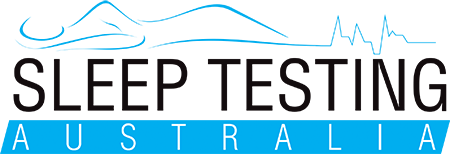
REM associated, moderate level OSA has a strong link with metabolic syndrome. A clinical-based cohort study published in January this year showed that REM-AHI of 15 or more was an independent predictor of metabolic syndrome (adjusted OR 7.08; p = 0.010). The study corrected for other strong predictors including BMI and age. Interestingly, the study showed no significant correlation with nonREM-AHI and metabolic syndrome.
This supports a previous population-based cohort study published in 2018 that found REM-AHI of 20 or more was significantly and independently associated with metabolic syndrome (including associations between individual conditions of metabolic syndrome, like systolic and diastolic hypertension and diabetes).
This highlights the importance of discriminating between overall AHI and REM related AHI in PSG reports. Where REM-AHI is of moderate severity (irrespective of overall AHI) increased risk of metabolic syndrome should be considered.
- Koo DL, Kim HR & Nam H (2020). Moderate to severe obstructive sleep apnea during REM sleep as a predictor of metabolic syndrome in a Korean population. Sleep and Breathing (2020):1-8
- Acosta-Castro P, Hirotsu C, et al. (2018). REM-associated sleep apnoea: prevalence and clinical significance in the HypnoLaus cohort. Eur Respir J. 52
- Coughlin SR, Mawdsley L et al. (2004). Obstructive sleep apnoea is independently associated with an increased prevalence of metabolic syndrome. Eur Heart J. 25:735-741
A recent literature review aimed to estimate the global burden of obstructive sleep apnoea with some interesting findings. Previously reported prevalence data may be underestimating the true prevalence of OSA with some countries having estimated prevelence data of 50% or more when looking at, at least mild level sleep apnoea. Total global estimates, according to this 2019 review put 425 million adults between 30 and 69 years of age having moderate level OSA.
More locally, almost 3 million Australian adults (between 30-69) were estimated to have a mild degree of obstructive sleep apnoea and over half a million have at least moderate level sleep apnoea. These estimates equate to about 1 in 4 Australian adults suffering from some degree of sleep disordered breathing disorder and 1 in 20 having a moderate level condition that many studies show to be a risk factor for CVD and other comorbidities.
The paper aimed to highlight the importance of managing the burden of OSA, particularly in countries where prevalence estimates are high, and treatment frequency is low. In a commentary on this article to LANCET, reference was reiterated to the importance of managing the burden of this condition when attempting to manage efficiency of the health-care system.
- Benjafield AJ, Ayas NT, Eastwood PR. et al. (2019). Estimation of the global prevelence and burden of obstructive sleep apnoea: a literature-based analysis. Lancet Respir Med. 7:687-698
- Garbarino S, Magnavita N, Sanna A & Bragazzi NL. (2020). Estimating the hidden burden of obstructive sleep apnoea: challenges and pitfalls. Lancet Respir Med. 8(1):PE1
Auto analysis of limited channel PSG underestimates overall severity of OSA in acute ischemic stroke patients. This study was limited to a clinical-based cohort that were tested for sleep apnoea within 48 hours of suffering an acute ischemic stroke. Previous research has found an acute and somewhat transient increase in sleep apnoea post ischemic stroke, however this study specifically identified that automatic analysis underestimated AHI, particularly in cases of mild-moderate OSA; ultimately missing a diagnosis in 18.6% of recordings.
In this study, classification of sleep apnoea (either of central or obstructive origin) only moderately correlated to manual scoring with sleep technologists. This is an important finding and reflects and supports the current Australasian Sleep Associations’ position of avoiding limited channel tests to definitively rule out OSA.
It also highlights that where comorbid conditions exists (particularly heart failure or ischemic brain injuries that are known to cause central apnoea) manual analysis using sleep technologists should be utilised.
- Huhtakangas JK, Huhtakangas J, Bloigu R & Saaresranta T. (2020). Unattended sleep study in screening for sleep apnea in the acute phase of ischemic stroke. Sleep Medicine. 65:121-126
- Seiler A, Camilo M, Korostovtseva L. et al. (2019). Prevalence of sleep-disordered breathing after stroke and TIA. A meta-analysis. Neurology. 92(7).
- Douglas JA, Chai-Coetzer CL, McEvoy D. et al. (2017). Guidelines for sleep studies in adults – a position statement of the Australasian Sleep Association. Sleep Medicine. 36:S2-S22
Obstructive sleep apnoea impairs cardiorespiratory fitness in overlap syndrome. A study published in Sleep and Breathing this January showed that COPD patients with comorbid OSA (overlap syndrome) performed worse in exercise tolerance and metrics assessing cardiorespiratory fitness. Previous studies have shown a strong relation between the two conditions with higher prevalence of either condition seen in patients with the other. This finding has led to theories of a causal relationship between COPD and OSA.
Nevertheless, De Carvelho Jnr and colleagues found patients with overlap syndrome had higher peak CO2 (830mmHg v. 1127mmHg; p<0.05) and higher systolic (180mmHg v. 220mmHg; p<0.001) and diastolic (100mmHg v. 110mmHg; p<0.001) blood pressure compared to their COPD counterparts during a cardiopulmonary exercise test. In the COPD and overlap groups with stage III/IV COPD, cardiorespiratory fitness also declined in the overlap group with exercise time, peak oxygen uptake and circulatory power all diminishing.
While this study did not test response to treatment of both conditions, previous studies highlight the importance of considering the confounding negative impact of OSA on the prognosis of COPD patients. Treatment of COPD remains key in managing patients with overlap syndrome with specific consideration needed for effectively managing nocturnal hypoxaemia due to airway obstruction.
- De Carvalho Jnr LCS, Trimer R, Lopez Zangrando K. et al. (2020). Overlap syndrome: the coexistence of OSA further impairs cardiorespiratory fitness in COPD. Sleep and Breathing. Jan 2020.
- Owens RL, Macrea MM & Teodorescu M. (2017). The overlaps of asthma or COPD with OSA: A focussed review. Respirology. 22:1073-1083
- McNicholas WT, Verbraecken J & Marin JM. (2013). Sleep disorders in COPD: the forgotten dimension. Eur Respir Rev. 22:365-375
